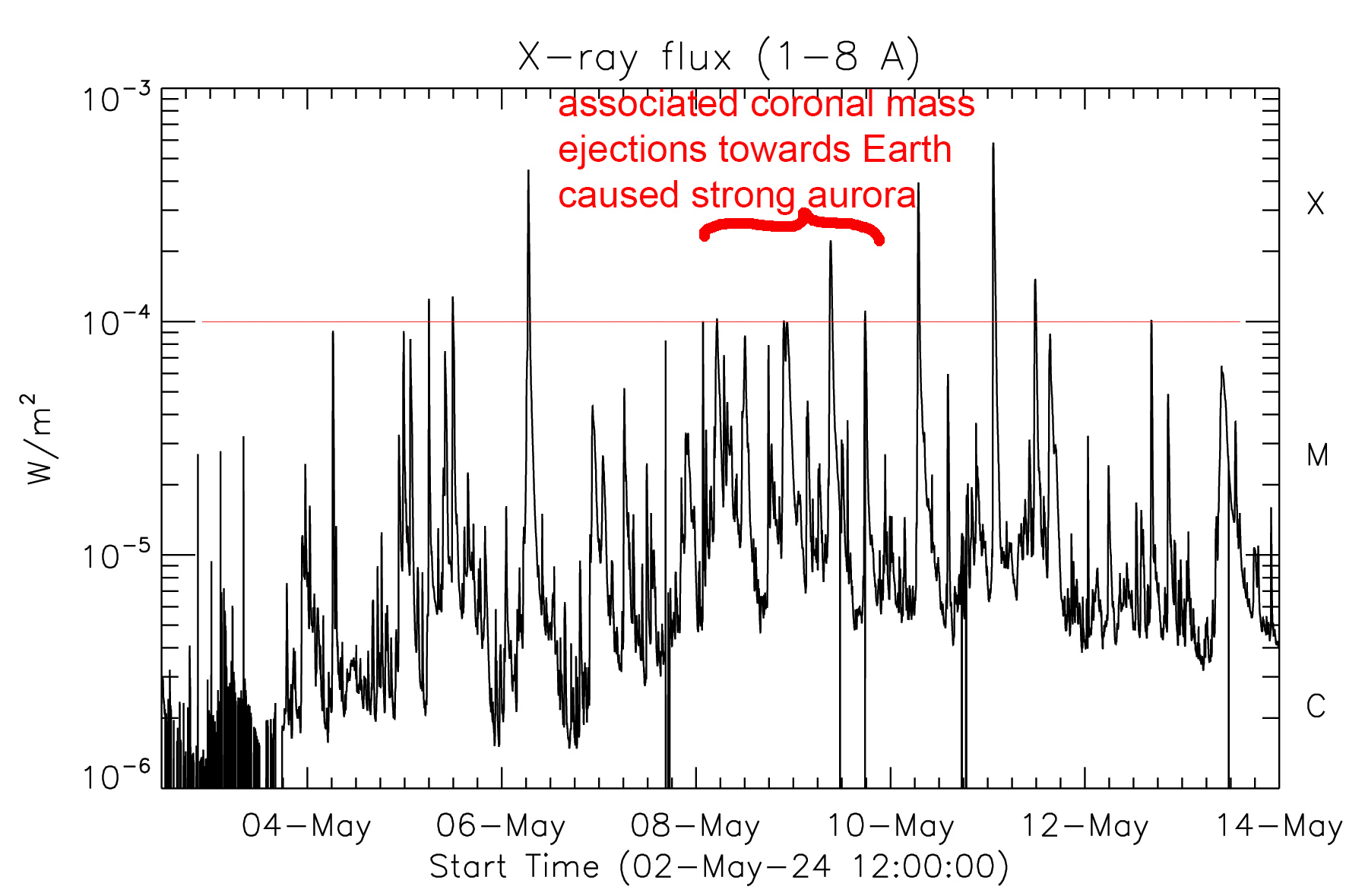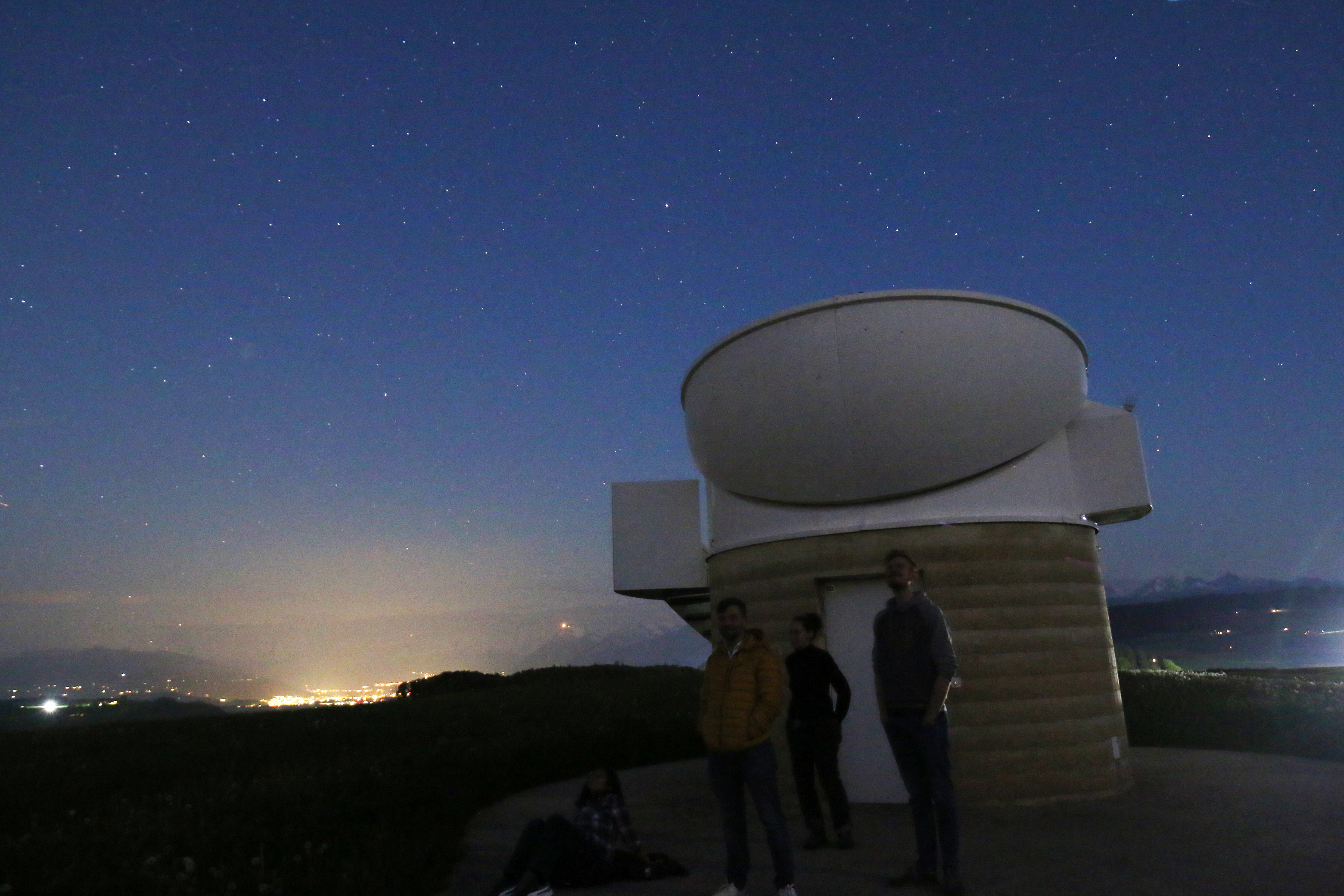The Sun has been particularly active in May 2024, producing some extremely large eruptions and thus enhanced space weather.
The eruptions expelled charged particles in the direction of Earth where they arrived on May 10, causing one of the largest displays of aurora in decades, or possibly even centuries.

For the Astronomical Institute of the University of Bern (AIUB), these events are unique for their research:
the Space Weather group aims to understand the physics of solar eruptions and improve models to predict them.
Jointly with the satellite geodesy group, we aim to investigate their influence on spacecraft orbits, which also were significantly affected during the recent events.
Solar eruptions are classified according to their intensity as A, B, C, M (medium) and X (extreme) and the past two weeks included 18 eruptions of class X (see Fig. 1), which is very rare.
Most months do not show a single X-class eruption.

On the night of May 10, aurora was seen much further towards the equator than usual.
Switzerland witnessed a magnificent display of red, pink and green aurora, visible by naked eye, even in cities.
Because cameras can "collect light", meaning that they can expose images for several seconds, colors appear more vibrant than by eye.
The image on top shows a composite of 3 images taken in Dübendorf by L. Kleint on May 10 with an exposure time of 2.5 seconds.
According to spaceweather.com, aurora was seen even in Puerto Rico at 18 deg N.
This is so rare that other recorded events were only in 1921 and 1859, making May 2024 a century-type event.
The next night, the space weather group went to AIUB's Observatory in Zimmerwald where some aurora was seen faintly towards North, but this time only on pictures.
The reason was the orientation of the interplanetary magnetic field, which was much more advantageously oriented on May 10,
such that conditions were favorable for the formation of aurorae during the first night, but not during the second night.


The space weather group is currently designing an instrument, which will be capable of measuring even larger eruptions on far-away stars.
The instrument will be installed at the Observatory in Zimmerwald and will help understand the physical mechanisms behind eruptions.